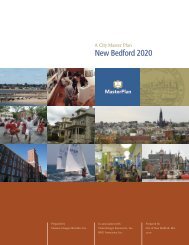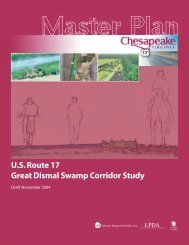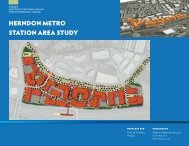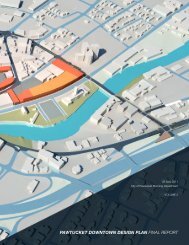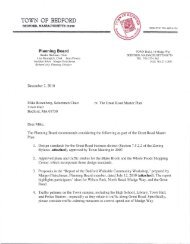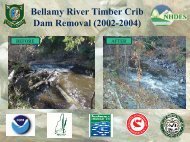Final Report - VHB.com
Final Report - VHB.com
Final Report - VHB.com
Create successful ePaper yourself
Turn your PDF publications into a flip-book with our unique Google optimized e-Paper software.
Bath Road. The following signalized intersections are all expected to experience 2035<br />
DHV demands that exceed existing capacity:<br />
State Route 196 and US Route 201<br />
State Route 196 and Village Drive/Community Way<br />
Pleasant Street and Church Street<br />
Pleasant Street and River Road/Webster Street<br />
Pleasant Street and Mill Street/Stanwood Street<br />
Bath Road and Federal Street/Sills Drive<br />
Bath Road and Merrymeeting Plaza<br />
Bath Road and US Route 1 Ramps/Gurnet Road<br />
Of these eight intersections, four are projected to operate at LOS F and three at LOS E<br />
under the 2035 DHV condition.<br />
In addition to the signalized intersections, several of the unsignalized Study Area<br />
intersections are projected to substantially deteriorate under the No Action Option.<br />
Poor traffic operations under 2009 existing conditions will continue to degrade at the<br />
unsignalized intersections of US Route 201 and Canam Drive, US Route 201 and<br />
Eagles Way, Maine Street and the US Route 1 southbound off-ramp, and Maine<br />
Street and Mason Street. In addition, at the intersection of State Route 196 and the US<br />
Route 1 southbound on-ramp, unsignalized left turns from State Route 196 to the onramp<br />
are projected to degrade from LOS B under 2009 existing conditions to LOS E<br />
under 2035 DHV conditions.<br />
5.2.2 Travel Demand Management<br />
The TDM sensitivity analysis suggests that the implementation of moderate<br />
measures (i.e., Employer-Support Program Level 2 and $1/day increase in parking<br />
costs for single-occupancy vehicles) could result in a 1 to 4 percent reduction in peakhour<br />
traffic volume demands in the Study Area for all three employment populations<br />
considered. However, with the implementation of the more aggressive program (i.e.,<br />
Employer-Support Program Level 4 and $2/day increase in parking costs for singleoccupancy<br />
vehicles), the percent reduction could range from 13 to 16 percent.<br />
Noting the strong local- and state-level <strong>com</strong>mitment for promoting TDM in the Study<br />
Area and the region, the supplemental analyses conducted for each of the applicable<br />
Build Options applied a reduction factor of 10 percent to all local traffic, which is<br />
defined for the purpose of this evaluation as all 2035 DHVs except regional through<br />
traffic on US Route 1 and State Route 196. Adjusting for the split of regional through<br />
traffic versus local traffic on these two corridors results in an effective reduction<br />
factor ranging from 6 to 8 percent for the US Route 1 and State Route 196 corridors.<br />
Again, all other movements were reduced by 10 percent.<br />
Conclusions 144



